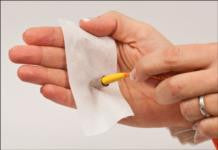
Cleaning and Inspecting Fibre Connectors
Dirty fibre connectors are the number one root cause of fibre optic system failures. These failures impact timelines for delivering projects and can result in signal loss. Inspecting and cleaning fibre connectors can reduce network downtime ensuring they are in good condition. Cleaning can remove microscopic dust particles from the ends of fibres.
So how does something so small impact performance? A dust particle can interrupt a laser signal, which can cause strong back reflections and result in instability of the entire system. Particles can also cause scratches to glass surfaces, when caught between two fibre end faces, permanently damaging the connector.
Whilst dust particles have their role in disrupting network connectivity, actions from installers can also impact performance. This includes:
- oils from hands - which can inhibit complete laser coverage
- film residues
- solvents or water - which can leave a powdery coating to contaminate the fibre end further
What actions should installers avoid when attempting to clean fibre connectors?
- Avoid blowing on a fibre-end face or using canned air, as this can cause additional damage
- Using fingers to remove dirt will increase the chance of oils impacting performance
- Old cloths or shirt sleeves are inherently dusty and therefore worsen dust exposure further
- Cleaning products which contain alcohol can damage the fibre end
But can dust really impact performance of a fibre network? Dust particles can be 20um or larger in diameter. A 1um dust particle landing on a core of single mode fibre can cause up to 1db of loss.
So how can you minimise exposure to dust on the fibre end-face?
- Inspect the fibre connector closely, looking for any signs of dust or dirt
- Perform a test against industry standards to be sure what you are seeing
- If the connector is dirty, carefully clean the fibre connector with a lint-free wipe
- Once again, inspect the fibre connector checking for additional signs of dust/ dirt
- If the connector is still dirty, carefully use a wet cleaning technique, quickly cleaning the affected area, followed by a dry clean
- Ensure no residue is left which could impact the fibre end-face following cleaning
Following these simple guidelines may seem time-consuming but will result in optimum connectivity across your fibre network. Furthermore, these actions will minimise the likelihood of an engineer having to be dispatched to an installation, therefore saving valuable time and resources. Employing best practices can also increase the chances of a successful installation, for example by storing cleaning tools and consumables in a resealable container. This will help avoid further contamination.
